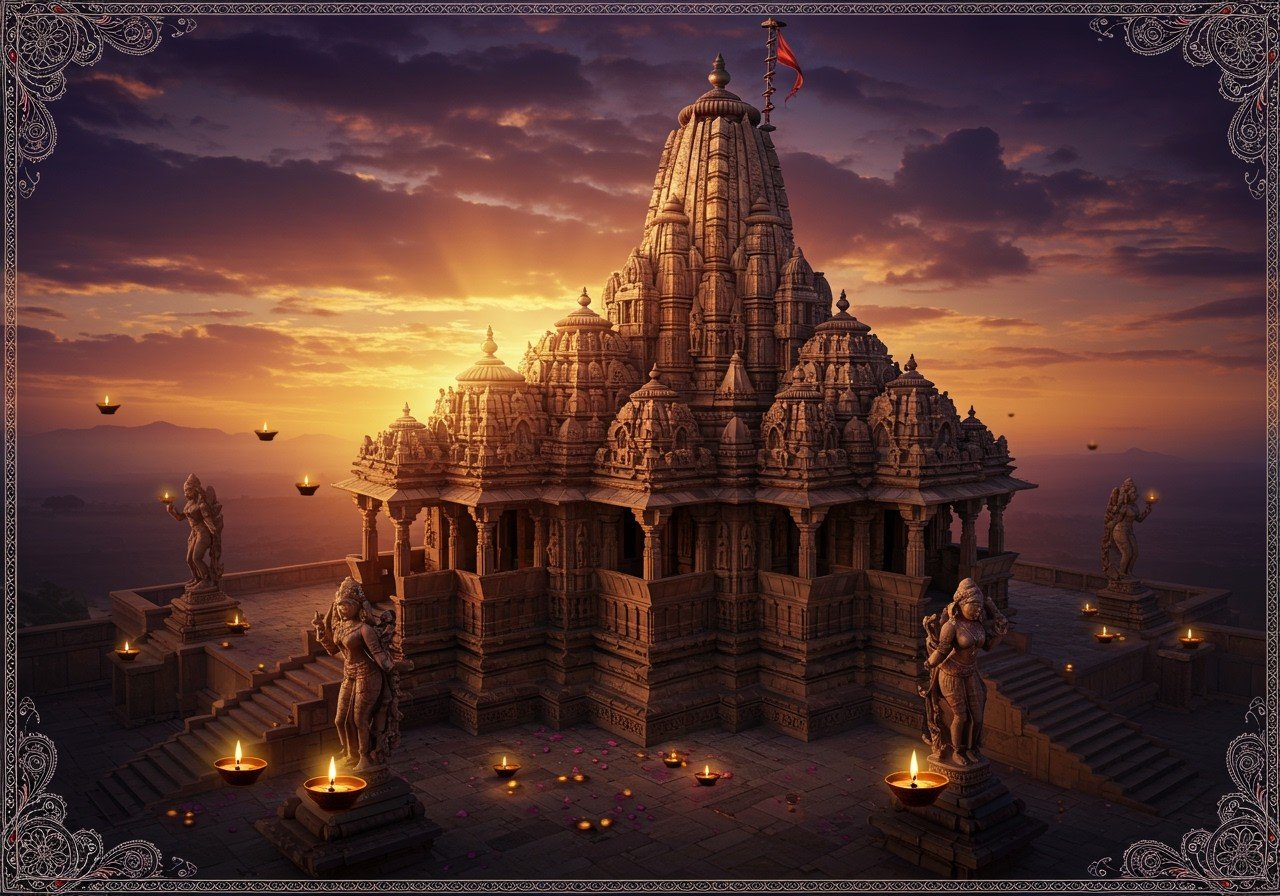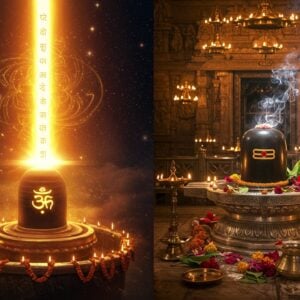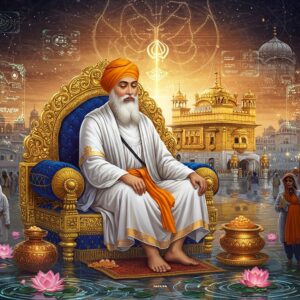
In the rich and vibrant tapestry of Indian history, certain rulers leave an indelible mark, not just through their conquests, but through their vision and values. Kumarapala, a shining star of the Chaulukya dynasty (also known as the Solanki dynasty), was one such king. His reign, from 1143 to 1172 CE, was a golden period for Gujarat and surrounding regions, a time of immense cultural, spiritual, and architectural growth that continues to inspire us even today.

The Journey of a Visionary King
Kumarapala’s path to the throne was not laid with flowers. It was a journey filled with familial politics and immense challenges following the rule of his predecessor, Jayasimha Siddharaja. However, his determination and sharp leadership qualities saw him through. He didn’t just claim the throne; he earned it by bringing stability and laying a strong foundation for a prosperous kingdom through his wise administrative reforms.
A True Protector: Military Strength and Political Acumen
A king’s first duty is to protect his people, and Kumarapala was a master strategist and a formidable warrior. His reign was marked by significant military achievements that brought peace and security to his kingdom.
- Establishing Dominance: He successfully subdued powerful neighbouring kings, including Arnoraja of the Chahamana dynasty and Mallikarjuna of the Shilahara dynasty. These victories weren’t just about power; they were about establishing the Chaulukyas as the primary force for peace and order in Western India.
- Expanding the Kingdom’s Borders: Under his leadership, the Chaulukya kingdom reached its peak, covering Gujarat, parts of Rajasthan, and extending its influence right up to the Konkan coast. He annexed the region of Malwa and even gained authority over Chittor, paving the way for a period of unparalleled cultural and economic prosperity.
A Heart of Dharma: Kumarapala’s Embrace of Jainism
Perhaps the most transformative aspect of Kumarapala’s rule was his deep devotion to Jainism. He became a devout patron of the faith, and his personal beliefs shaped the very soul of his kingdom.
- Champion of Ahimsa: Embracing the core Jain principle of Ahimsa (non-violence), he introduced policies across Gujarat that were revolutionary for their time. He strictly prohibited animal slaughter, alcohol, and gambling, striving to create a more compassionate and moral society for everyone.
- Preserver of Faith and Art: Jain scriptures honour him as the last great royal sponsor of their faith. His unwavering support was instrumental in preserving precious Jain philosophy, literature, and art for future generations. While he was a devout Jain, he also created an environment of religious harmony, supporting other faiths and traditions.
Carved in Stone: An Architectural Renaissance
Kumarapala’s reign was truly a golden age for temple architecture. His devotion found expression in the magnificent temples he commissioned, leaving behind a legacy that continues to awe visitors. To truly appreciate the architectural genius of that period, one can draw parallels with other historical wonders like the Badami Cave Temples.
He commissioned a grand temple at Somanatha in 1169 CE and lovingly restored the Kedareshwar temples. Under his patronage, the beautiful Maru-Gurjara style of architecture flourished, influencing temple design for centuries. It is believed that he was responsible for the construction of over 1,400 Jain temples across his kingdom, each a testament to his faith and his love for art. This dedication to sacred spaces is a cherished part of our culture, much like the stories behind the famous Sas Bahu Temples.
The Spirit of a Just Rule and Its Reflection in Our Homes
Kumarapala’s reign is often fondly remembered as a “Rama Rajya,” an ideal state where justice, peace, and prosperity flourished. This concept is inspired by the righteous rule of Lord Rama, who embodies dharma and virtue. The story of Rama, as told in the epic Ramayana, teaches us the importance of fulfilling our duties with integrity, a principle that King Kumarapala strived to live by.
For those of us who wish to bring these timeless values into our own lives and homes, connecting with our traditions is key. Worshipping deities in our home mandir is a beautiful way to keep these ideals alive. At Poojn.in, we understand this deep-seated need for authentic connection. We bring you a heartfelt collection of sacred items to enrich your spiritual practice.
You can beautifully adorn your deities with our exquisite Laddu Gopal Shringar Sets or find the perfect Holy Idols for your sacred space. Explore our complete range of Gopal ka Sringar to make your worship truly special. For any assistance, feel free to visit Poojn.in or connect with us at 03369029784 or on WhatsApp at 9476142738.
Understanding Kumarapala’s Enduring Legacy
Many people are curious about what made Kumarapala such an impactful ruler. His contributions were vast, touching upon governance, religion, and architecture. He is celebrated for building countless temples and for his tireless promotion of Jainism, which ushered in an era of peace and cultural richness across his kingdom.
The architectural style he championed has left a lasting impression on India’s heritage. The grand temples and monuments built during his time are admired for their stunningly intricate designs and have inspired Indian architecture for generations.
His support for Jainism was also deeply significant. By championing its principles, Kumarapala helped foster a culture of non-violence and tolerance, allowing the faith and its philosophies to flourish and become deeply rooted in the region.
It’s important to remember that his reign was not without its trials. He faced numerous challenges, from defending his vast kingdom from invasions to managing internal politics, but he navigated them all with great strategic skill. Under his strong leadership, the Chaulukya Dynasty truly reached its zenith, leaving behind a legacy of art, stability, and cultural harmony that we cherish to this day.


